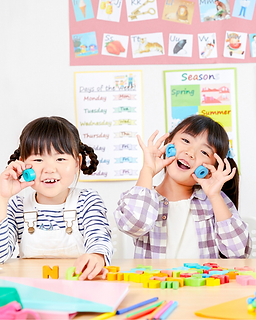
15 June 2025
How Visualization Helps Kids Beat Stress (And Why It Works)
In today’s fast-paced world, stress doesn’t wait for adulthood to arrive—it can show up in childhood too. Whether it’s school pressure, social worries, or just big emotions they don’t yet have words for, kids are navigating a lot. But here’s the good news: you can teach your child simple, powerful ways to manage stress—and it can be fun.
One of the most effective tools?
Visualization.
Also known as “mental imagery,” visualization is like giving your child a superpower—one that helps calm their mind, unlock inner strength, and build emotional resilience.
What Is Visualization (and Why Does It Work)?
Visualization means using your imagination to create calming or empowering mental images. Think of it like a mini movie inside your mind that helps you feel better.
Here’s what makes it special: The brain doesn’t fully distinguish between real experiences and vividly imagined ones. That means if your child imagines something peaceful or positive, their brain responds as if it’s really happening—helping to reduce stress and anxiety in real time.
The Science in Simple Terms:
Visualization activates the brain’s calming pathways.
It slows down heart rate, reduces cortisol (the stress hormone), and increases feelings of safety.
It builds confidence and helps kids “practice” emotional skills before facing tough moments.
Visualization Techniques for Kids (and How You Can Guide Them)
1. The Calm Place
Purpose: Create a safe mental retreat when stress feels too big.
Try This:
Ask your child to close their eyes.
Say: “Imagine a place where you feel really safe and happy. It could be real, like Grandma’s garden, or made up, like a cloud castle.”
Let them describe what they see—colors, sounds, smells.
Encourage them to “go” to this place whenever they feel overwhelmed.
Use this before bedtime, after a tough school day, or during transitions.
2. The Worry Balloon
Purpose: Help kids release anxious thoughts.
Try This:
Say: “Picture a balloon in your favorite color.”
“Now imagine placing your worry inside the balloon. It might be a word, a picture, or just a feeling.”
“Watch the balloon float up into the sky and drift away.”
This is great for kids who tend to hold in their worries.
3. The Brave Self
Purpose: Build confidence before challenges.
Try This:
Ask: “What would the bravest version of you do?”
“Close your eyes and imagine yourself walking into that test (or playground, or performance) feeling strong and calm.”
“Picture yourself smiling, breathing deeply, doing your best.”
Perfect for kids facing performance anxiety or social fears.
4. The Emotion Animal
Purpose: Help kids identify and manage big feelings.
Try This:
Say: “If your feeling today was an animal, what would it be?”
“Is it fast and loud like a cheetah, or slow and heavy like an elephant?”
“Now imagine that animal getting some rest, or going on a gentle walk.”
Helps kids externalize emotions and feel more in control.
How Parents Can Support Visualization at Home
Model it yourself. Say: “I’m closing my eyes and taking a little calm moment in my mind.”
Use it daily. Before school, bedtime, or stressful events.
Make it playful. Let them draw their visualization after. You can even name their “calm place” together.
Keep it short and sweet. Even 1–2 minutes of guided imagery can be effective.
Final Thoughts: Imagination Is a Superpower
Your child’s imagination isn’t just for stories—it’s a built-in emotional toolbox. Visualization gives them a safe space inside their mind to rest, recharge, and reset. And with your support, they’ll grow up knowing they can face stress not by avoiding it, but by rewiring how they experience it.
The world can feel big and loud, but your child can learn to find calm inside.
One image, one breath, one visualization at a time.
You might also like...
3 Fun Ways to Teach Communication in Classrooms
The Surprising Psychology of Puzzles
Why Mindfulness Worksheets Help Kids Regulate Emotions


